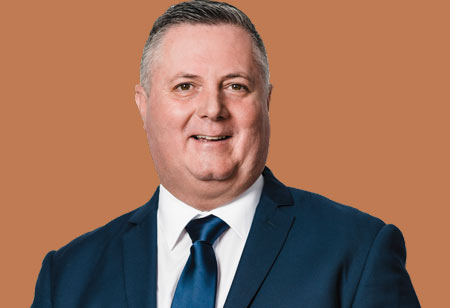

Thank you for Subscribing to Insurance Business Review Weekly Brief

Luke Gallagher is the Executive General Manager of Direct Claims within the Direct Insurance Australia division at IAG. Luke oversees the claims business across IAG’s consumer brands in Australia including NRMA Insurance, ROLLiN' Insurance and their insurance partnership with Royal Automobile Club of Victoria (RACV). He is responsible for developing and leading the Claims strategy across IAG’s all customer channels, with a focus on delivering an unparalleled and personalised claims experience.
Luke has 30 years’ experience in the insurance industry and a wealth of knowledge across all aspects of general insurance. He joined IAG as a Claims Consultant, having an in-depth understanding of the Claims life cycle. Luke has personally been on-the-ground and overseen IAG’s claims response to some of Australia’s most significant extreme weather events. He is passionate about helping Australians understand and minimise their risks and helping customers get back on their feet when the unexpected happens. Leveraging Technology and Compassion in Insurance Claims In my 30-years at IAG, I’ve been on the ground with our teams to help our customers following some of the worst natural disasters our country has seen. From bushfires to floods, cyclones, hailstorms and earthquakes, we face some of the most extreme weather on the planet. But not a day goes by that I don’t reflect on the two natural disasters that have affected me the most. The 2019-20 Black Summer bushfires and Australia’s worst series of floods on record in 2022. The Black Summer bushfires were nothing like we’d seen before. The bushfires raged across multiple states, destroyed thousands of properties and tragically, claimed 33 lives. It was a volatile situation as we balanced being on the ground as quickly as possible for our customers with the safety of our Assessing and Claims teams. Safety is always our priority, but the dedication of our teams to helping our customers doesn’t come without risk. And I dread the thought of my team in harm’s way. “We need to have the systems and processes in place to test and adopt the latest AI innovations to provide the most efficient possible claims experiences for customers.” Driving back to temporary base from inspecting property damage near the New South Wales and Victorian border, Judi, one of our Assessors with more than 30 years’ experience, was forced to shelter as a storm swept through. Back on the road, a bushfire flared dangerously close by. Luckily, firefighters were there and escorted Judi through the fire zone. She eventually reached an evacuation centre where locals, themselves shaken and distressed by their own experience, took her in. I was with our team in the tight-knit community of Cobargo, on the New South Wales South Coast, a town devastated by the bushfires. I spoke with customers who had lost everything. The burns on their hands a painful sign of how hard they had fought to save their homes. Many were lucky to escape the fires. The terrible bushfires were followed by some of the most devastating floods on record in 2022. For many people in high flood risk areas, the floodwaters were beyond anything they’d experienced before. The loss and devastation these people suffered was heartbreaking. Our customers lodged 64,000 claims from the 2022 floods. These major events underscore the importance of the insurance industry working with governments and communities to help protect them from the impacts of climate change on extreme weather. We know that extreme weather is becoming more frequent and severe due to the changing climate. That’s why it’s critical that the industry works with governments at all levels to help protect communities through investment in mitigation initiatives. This includes improved land use planning so more houses aren’t built in harm’s way, for example, on high-risk floodplains, and stronger builder codes so our property stock is better able to withstand extreme weather events. It’s also critical that the insurance industry harnesses the latest technology and tools to help their customers understand the risks they face at their individual property and benefit from mitigating those risks. We also need to have the systems and processes in place to test and adopt the latest AI innovations to provide the most efficient possible claims experiences for customers. For example, Our Total Loss AI predictor helps us determine motor vehicle damage. Our fastest claim settlement to date is just 24 minutes from lodgement. There’s no doubt the rapid advances in technology and innovation are exciting for our industry, however, it’s critical that supporting customers on the ground, face to face, following an extreme weather event must remain a key focus for our sector. That’s where we must be to reassure our customers and their communities that we will be there with them, every step of the way, on their road to recovery.I agree We use cookies on this website to enhance your user experience. By clicking any link on this page you are giving your consent for us to set cookies. More info